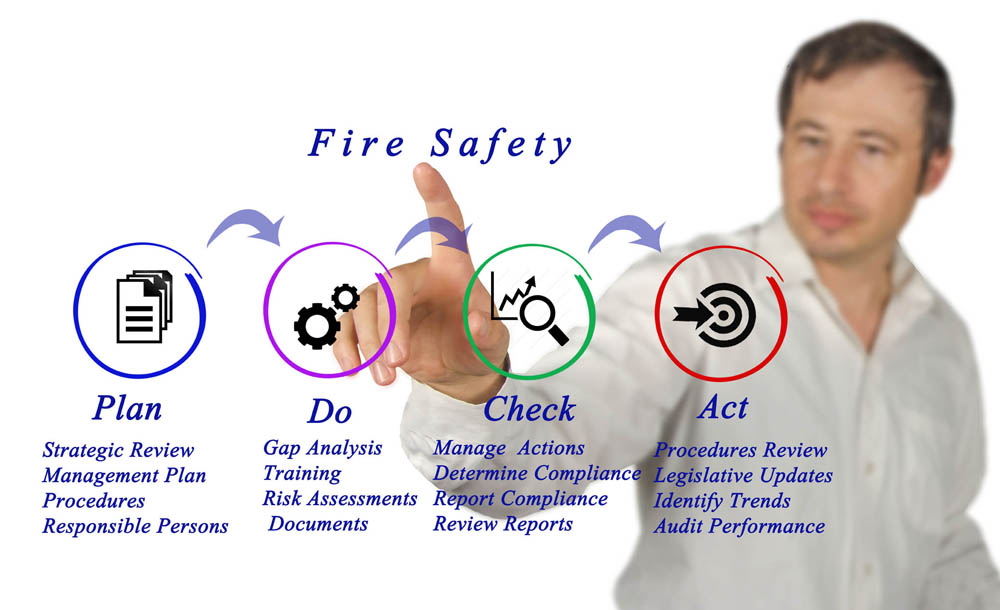Undertaking a fire risk assessment is a legal requirement for every business and also for landlords of premises occupied by more than one single-family, or even premises which are unoccupied. There can be a huge number of things to take into consideration depending upon the nature of a business, the number of employees, the layout of the building, the equipment used, the materials required, the people who may be on the premises at any given moment, and more.
If you have not had appropriate training in undertaking a fire risk assessment it can be very difficult, and this would be the case with most employers and landlords. This is why so many businessmen and other “responsible persons” as the law describes them, prefer to use the services of a professional fire risk assessor such as ourselves at UK-Fire Risk Assessments. We have the training and the experience to know what to look for in any given situation and advise you accordingly.
The law concerning fire safety is the Regulatory Reform (Fire Safety) Order 2005 and the responsibility for enforcing it rests with your local fire authority. Indeed, so complex is it that numerous fire authorities have produced documentation guidelines and templates which describes all the things to look out for and take into consideration when conducting your own fire risk assessment.
It must be highlighted, any downloaded documentation is used entirely at your own risk to identify what you consider are your significant findings, and also whether you consider the information therein to be suitable and sufficient. It is in no way exhaustive, and local fire authorities will accept no liability for any circumstances which may arise as a result of using these documents.
It is advised more complex premises will probably need to be reassessed by a person who has a comprehensive knowledge and training or experience in fire risk assessment.
Your fire safety management policy should include any changes that have occurred since your last fire risk assessment. This could include a change in the roles and responsibilities of employees, fire marshals and wardens, new employees, new technology or working practices, emergency procedures, new working layouts, escape routes, young persons on the premises, and so on.
Suggested control measures for fuel sources include ensuring that flammable materials and substances are put away safely after use, and any combustible waste is removed or safely stored.
There can be a huge number of sources of ignition. Obviously, naked flames should be avoided where possible, and combustibles and heat sources kept separately. PAT testing on electrical equipment must be current and fixed installations tested. All appliances should have the correct fuses, while old or worn wiring needs to be replaced. Ductwork filters on cooking equipment need to be regularly checked and cleaned, and air vents on electrical equipment kept free from obstruction. You should enforce your No Smoking policy and have a fire safety policy which any visiting contractors should be made aware of.
You need to check all your firefighting equipment and ensure everything is in working order. Furthermore, check that staff who have been trained in its’ use are still on the payroll: they may have moved on, in which case you need to train new staff. You need to check fire routine notices and ensure they are visible, and regularly test the fire alarm.
You also need to check all your escape routes. It quite often happens that equipment is moved around or new machinery installed, and this could result in blocking what was once an escape route.
You also need to remember that the Fire Service is responsible for enforcing the law and may check your fire safety audit at any time without warning. In addition, you need to keep a duplicate copy of your risk assessment off the premises in case the original is lost or destroyed.

